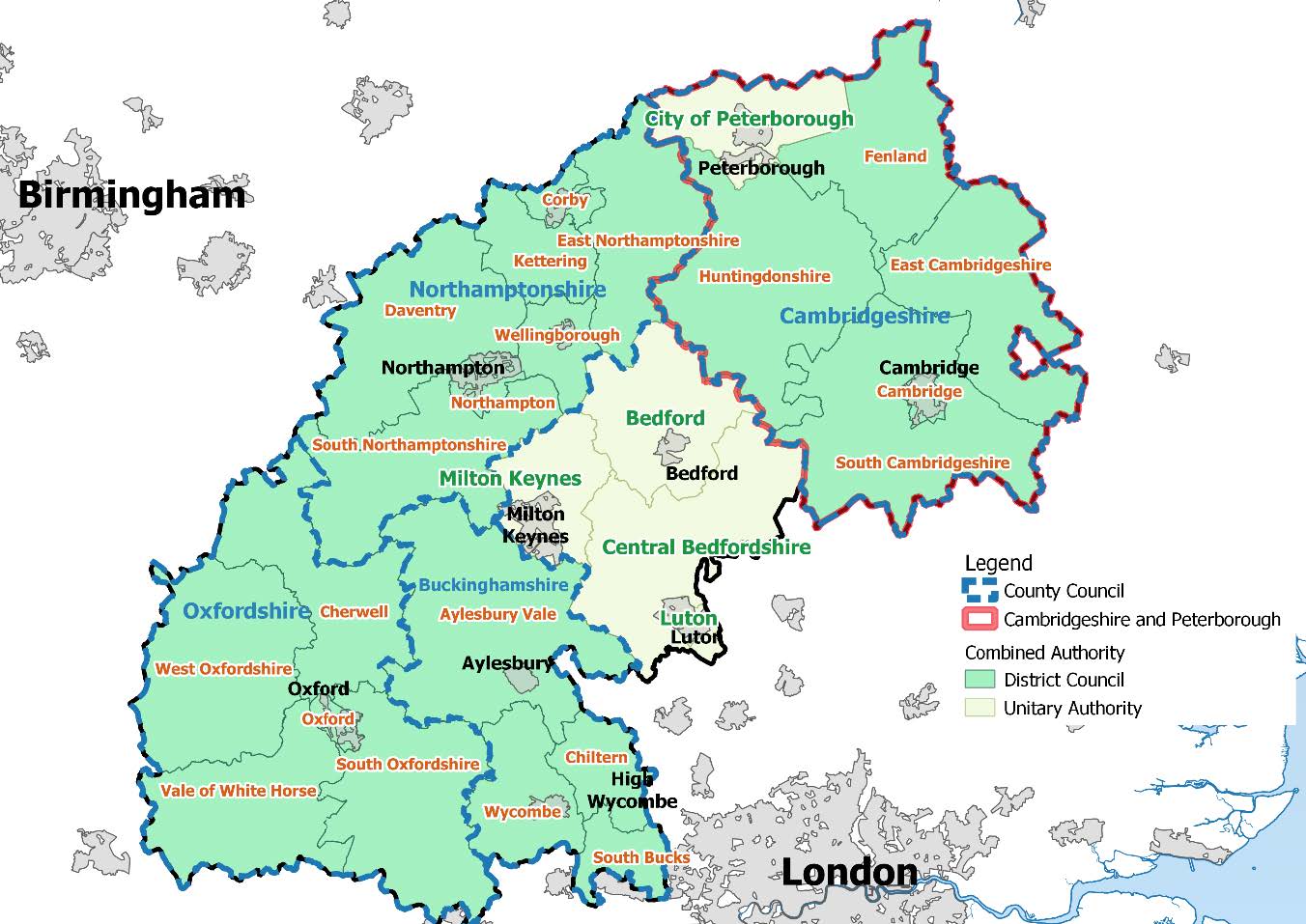Comment
The Oxford-Cambridge Arc
Somewhere over the rainbow
The Spring Statement included with it the publication of a paper entitled “The Oxford-Cambridge Arc: government ambition and joint declaration between government and local partners”. For the first time we have a plan showing the Arc’s full extent – stretching down and throughout both Buckinghamshire and Oxfordshire, up to Corby, and washing over all of Northamptonshire and Cambridgeshire.

In this new paper, the Government re-affirms its long-term economic ambitions for the Arc, including an ambition for up to one million high-quality new homes by 2050 in order ‘to unlock the Arc’s full potential’. However, the extent to which this is a sufficiently ambitious target for such a large and economically dynamic area is not something which the document explicitly addresses. Even without the Arc initiative, it is likely that the area would have had to plan for a million new homes given the extent of the geography and that timeframes involved effectively cover two Plan periods.
The much hoped for spatial strategy still appears to be some way away, but the ‘Joint Declaration of Ambition between Government and the Arc’ between Government, local authorities, the Cambridgeshire and Peterborough Combined Authority, the Arc’s four local enterprise partnerships (LEPs), and England’s Economic Heartland is a welcome step forward, albeit that it states what we already know about the area, its opportunities and challenges, rather than a meaningful framework for delivery. That said we are, at last, seeing some real recognition by Government of the environmental challenges from growth of that scale.
As the National Infrastructure Commission (NIC) stated last month, "It seems unlikely that a joint spatial vision will be produced by summer 2019 ... Without the spatial vision, local authorities do not have the clarity required to make plans capable of ensuring transformational development." With a public consultation mooted for Summer 2019, the elephant in the room of course remains how this ambition can be fulfilled by public and private sector partners within the development industry, and the appropriate framework needed to provide the certainty in the planning system that investment of this scale requires.
The highlighting of co-ordination across Central Government and across local partners (through the Arc Leaders’ and Chief Executives’ Groups) is definitely a welcome sign. Set against this, however, there remains no fixed date for the independent Business Chair promised by the Government (expected “shortly”), nor the Arc Advisory Group that he or she will lead (expected “late Spring”). Nor has there been any update on the promised Ministerial Champion for the Arc (expected “in due course”).
The co-ordination of 31 local authorities and four LEPs is, of course, no easy task, even before you throw in the political uncertainties posed by the local election cycles (11 of the Arc’s local authorities go to the polls in a few weeks’ time) and the ongoing political battles being fought over the move to unitary council arrangements in Buckinghamshire - to name but a few.
Whilst decision makers grapple with balancing ‘top down’ policy and local progress on delivering the Arc, there remains some ambiguity as to how this can be achieved in conjunction with key stakeholders, not least the general public who, as seen by the increased numbers of action groups forming across the geography, are feeling ever more disconnected from the process.
With so many parties involved, and many stakeholders already preparing their own long term plans for infrastructure and growth in the region over the same timeframe (including, at either ends of the Arc, the Oxfordshire Plan 2050 which is currently out for consultation, and the non-statutory Cambridgeshire and Peterborough Strategic Spatial Framework), there is an urgent need for the Arc to be taken to a stage where the development opportunities can be integrated with, and facilitate, those more strategic sub-regional plans.
Whilst governance and statutory plan-making powers remain to be clarified, the new joint Advisory Group comprising experts and leaders is intended to support the Government’s ambitions across four thematic areas: productivity; placemaking; connectivity; and environment. However, the apparent absence of landowners, developers, infrastructure providers and other private sector partners to date is notable.
With renewed emphasis, commitment and funding, we are pleased to see that the Arc remains high on the Government’s agenda. However, with so many parties involved, and the absence of regional planning, there appears to be a reticence from Government to stipulate what is required and where. The programme for the next 12 months will hopefully increase momentum, and we understand will include the completion of analysis into the possibility of new or expanded settlements within the corridor.
We look forward to participating in the consultation exercise this summer, and would urge those with interests in the area to do the same and assertively promote their interests within the Arc, both to the Advisory Group and to the Arc Leaders Group. The lack of private sector representation will only be solved by actively engaging.
14 March 2019
Image courtesy of The Oxford-Cambridge Arc: government ambition and joint declaration between government and local partners